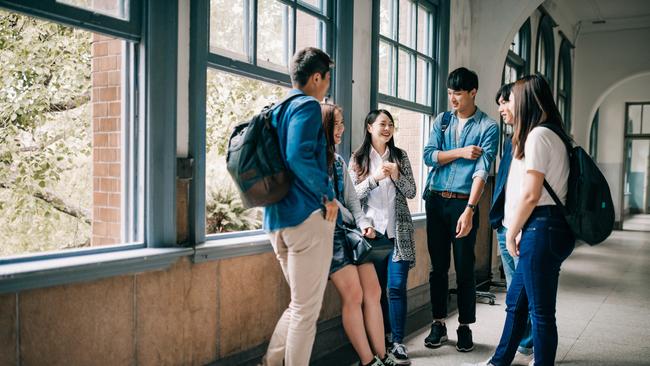The spectacular international education recovery is not a new normal

For the university sector, it is apparent that there will be limited growth funding from the government, and domestic volumes are going to remain depressed as long as we enjoy record low unemployment rates. As they look forward to the next couple of years, universities will be counting on continued growth in international student enrolments to offset their fiscal woes.
In contrast, the federal government will be dreading further strong growth in student numbers as net overseas migration becomes the scapegoat for the housing crisis. Economist Chris Richardson is correct in pointing out that the core issue has been housing policy, not immigration. However, Richardson and others have called for the capping of student visas as a stopgap solution. This is premature and unnecessary.
The hopes of the institutions on the one hand, and fears of the government on the other, are likely to be largely misplaced.
There may be at best one more year of high student visa numbers, but the fundamentals dictate that we are due to drop back to more normal numbers of student arrivals very soon.
This is a textbook V-shaped recovery and catch-up rebound – not a new trajectory.
The basis of this is prediction is an understanding of the three core drivers that underpin the sudden boom in international education.
First, student arrivals have been inflated by those who had begun their studies just before or after Australia closed its borders.
These are the “finishers” – those who had started but were stuck offshore and online. Many would have reduced the number of subjects they took in the hopes of finally arriving and completing their course on campus.
Second, student arrivals were also driven by a large number of students, especially at masters level, who chose to defer their start while borders were closed. These are the “deferrers” – we know from many students surveys that at the height of the pandemic most international students chose to defer or delay their studies while travel was so severely disrupted.
Finally, for many students who arrived in recent years work was the primary motivation, not study. With deteriorating employment prospects back home and a very strong labour market in Australia, it didn’t take much to encourage increased arrivals via the student visa. These are the “workers” – the same students supposedly are enrolled at “ghost colleges”.
The numbers of workers might have been more modest if not for the fact the former government lifted the longstanding 20-hour a week cap on the number of hours that students could work, thereby turning the student visa into a de facto work visa. The current government has reinstated the cap (with a modest increase to 24 hours a week) and introduced a range of integrity measures to address the students, providers and agents who may be abusing the student visa.
When you add together the finishers, the deferrers and the workers, on top of “the students” – those who have a strong preference for studying in Australia in any given year – you get the sorts of eye-watering numbers quoted above. No one should assume this is some new trend.
The implications for universities are clear – there cannot be an expectation that we will see further growth anywhere near the levels we experienced last year and this year.
With the exception of China, which reopened only earlier this year following the abandonment of its zero-Covid policy, there aren’t many finishers or deferrers left to come through the system.
The government’s integrity measures also will curtail demand from the workers.
We should expect an imminent normalisation in the numbers of students. This would likely see the numbers of new students land within ±10 per cent of the most recent figures, depending on the institution, program level and country of origin.
Likewise, as it grapples with a housing crisis and uncomfortably high net overseas migration figures, the government will need to be examining other drivers of migration; student numbers will be a more modest contributor in the future.
The measures already announced will have a substantial cooling effect and, with time, we will also start to see more students graduate and return home, which will further reduce the international student component of the vexing net overseas migration figures.
The V-shaped recovery in international student numbers and catch-up rebound is emblematic of both Australia’s attractiveness as a study destination, and the commitment of our students to defer, start and finish onshore to experience everything our cities and campuses have to offer.
The spectacular recovery is not a new normal but a return to normal, of which we can be proud.
Jon Chew is global head of insights and analytics at Navitas.



In the year ending last June, almost 580,000 student visas were granted by the Department of Home Affairs. This is more than double the 264,000 visas granted during the previous financial year when Australia’s borders first opened. This is also 42 per cent higher than the pre-pandemic baseline in 2018-19.